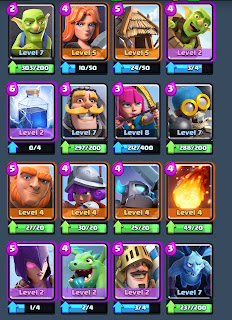1. MSQRD (Masquerade) (free)
This app allows students to record themselves in 30 seconds. The most amazing part of this app is that you can apply filters and animations over your face like SnapChat. This app allows students to publish to Twitter if you have a classroom hashtag or students can send you an email with the video inclosed. They have different filters in the picture I took a picture with the American flag, student's could record their voices over a different flag from a country of their choice.
2. Pixel Press Floors (free)
This app allows you to create your own video game. It allows you to draw on screen (in paper mode) and draw out the different levels of the game. There are a ton of lesson plans and tried and true ideas here: http://www.projectpixelpress.com/education
Once you get going you can create different levels of complexity that include different problem solving steps. In my class students create their own and test it as an assessment and students rank its difficulty level and math included.
Once you get going you can create different levels of complexity that include different problem solving steps. In my class students create their own and test it as an assessment and students rank its difficulty level and math included.
 3. Morphi (free)
3. Morphi (free)
Morphi is an app that allows students to create and print a 3D model to a 3D printer directly from their iPad. Students in my math class made weird 3D dice and we found the experimental and theoretical probability after they printed them. At the time we did not have a working 3D printer so we printed them at the DoSpace in Omaha. You can check that out here. Morphi is a great tool I haven't found another that works as well for high school students without moving to Google SketchUp or another computer program. They have an educational app, but currently costs $8.99, which might be worth the purchase if you had one iPad in your classroom.
 4. Tickle (free)
4. Tickle (free)
Is a one stop shop for coding devices. I use this app with my students to code a BB-8 with artimetic sequences and later in the year we code for graphing points using our Parrot Drones. This app is extremely hands on when it comes to coding software on the iPad. Its ease and layout makes it easy for students to pick up and 'fly' with.
 5. Locks ($1.99)
5. Locks ($1.99)
Locks is our only paid app, because you only need one for your classroom. BreakoutEDU will be a top 10 educational company by the end of the decade, because BreakoutEDU thrives on bringing growth mindset of problem solving and critical thinking to the forefront of education. If you haven't seen BreakoutEDU before I would suggest touring their website before purchasing here. The goal of BreakoutEDU game is to get out a series of locks before the time expires, but with the app you don't need locks just app. So the $90 box is the same thing as the $1.99 app.
 6. Seesaw (free)
6. Seesaw (free)
Seesaw has been my go to blogging platform this past year with my students. This collaborative app allows teachers and students to have a class blog for free. I use to use KidBlog.org, but now they charge $20 for the same thing that Seesaw does. (And it does it better.)
The ease to use Seesaw is signing up and giving students something to put in their folder. With ease of use and a free place for students to publish to the web, makes it an ideal tool of any innovator.
 7. Block Craft 3D (free)
7. Block Craft 3D (free)
My students love Minecraft, but in the app store Minecraft is quite expensive especially for an educator. The equivalent is a free app Block Craft 3D which allows students the same experience as Minecraft, but without the price. The only thing I wish Block Craft 3D had was the ability to communicate with others in the game.
Otherwise we use this app in my Standards class especially since it easier to talk about volume, surface area, perimeter, and other geometrical terms with a visual that they made.
 8. Padlet (free)
8. Padlet (free)
Padlet is an old-y, but goody. This app never disappoints when you have students collaborating in groups. I use this in all my group projects to have students brainstorm and sort their brainstorming into groups. It is a digital, yet concrete way of digital communication with an iPad. This communications tool is a great tool that all innovators should have in their repertoire if they are heading to college, workplace, or even high school.
9. Bloxels Builder (free)
Bloxels is another app made by the same company that makes Pixel Press Floors where you can create your own video game. This app is great for more elementary or middle school classrooms. You can buy the bloxels or use the app in the same way where you fill them out to make different levels.
Great app to start making students problem solvers of making difficult puzzles and levels for other students.
10. Typorama (free)
The last app is Typorama, this app takes pictures from the internet, library, and camera roll and allows you to insert text and filters over the top. This is perfect for having students make their own memes and infographics. This app is high quality I use it when I take pictures or post to Twitter, because the detail level is incredible.This app is perfect for the innovator who takes notes in a unique way and produces great visuals.















